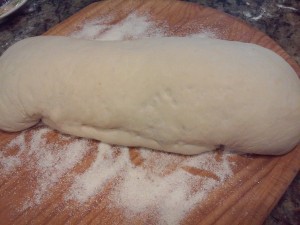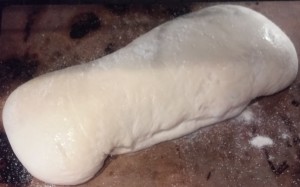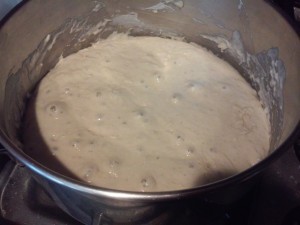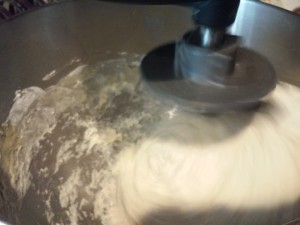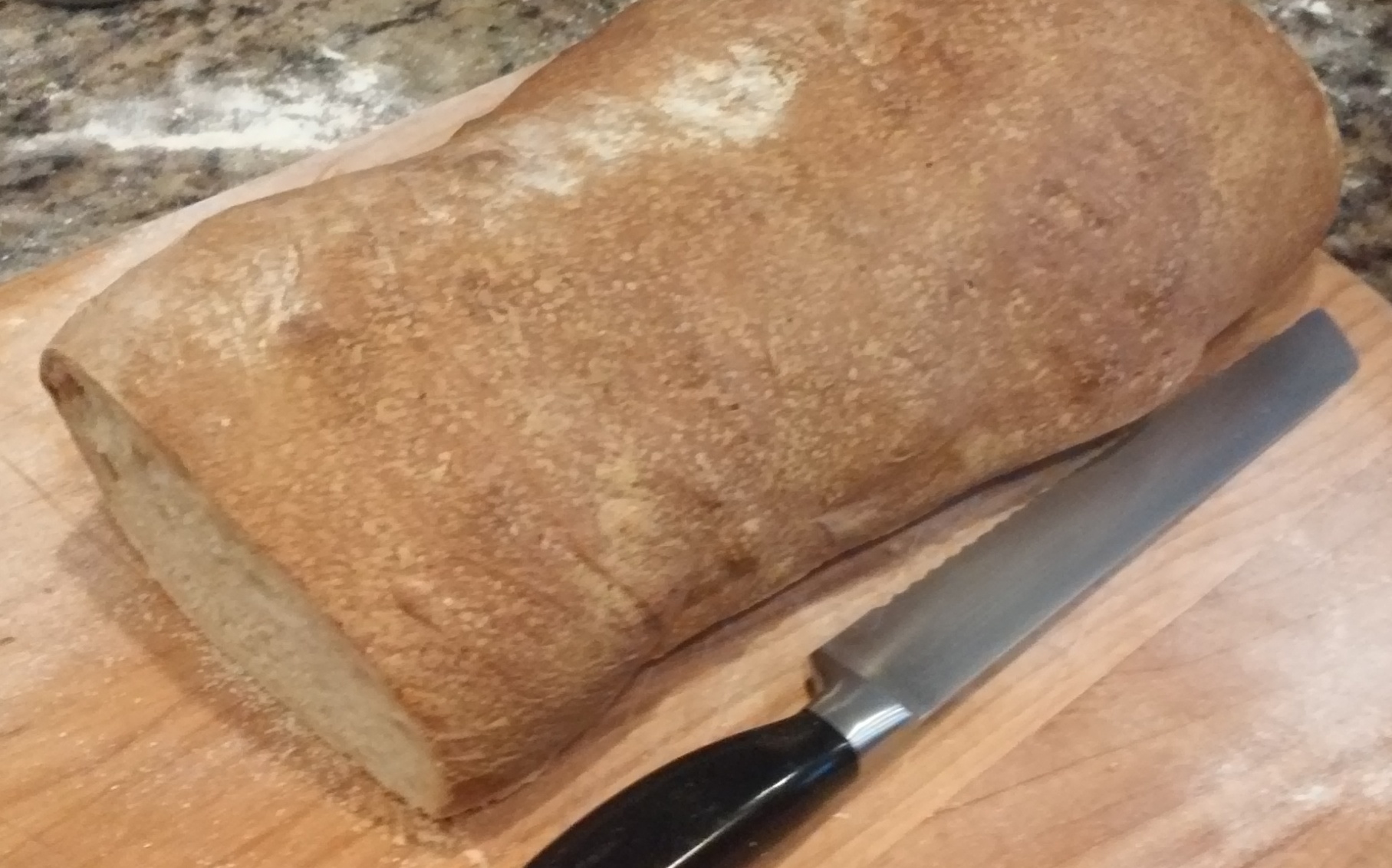
HOMEMADE BREAD – CIABATTA
Baking is one of my favorite Kitchen Activities and I especially love making bread and the Winter Months are the ideal time to do it. Not only will the result be a delicious product but your kitchen and your home will be warm with the fresh fragrance of baking bread and the communal warmth your family will feel when sitting down to the table and enjoying freshly buttered bread with their meals.
I love to watch the dough raise up and the smell of freshly baking bread is indeed heavenly. When a fresh loaf comes out of the oven your taste buds perk up and your mouth waters for a slice of that hot, buttered bread!
One of my favorite type of breads is Ciabatta. Ciabatta is Italy’s answer to the French Baguette. It was created in 1982 to stop the influx of French Baguettes into Italy. The Bakers there were afraid that the use of the Baguette would hurt there business. Ciabatta is a crusty bread with a chewy inside texture. It is fairly simple to make, although it does take a little bit of time but if you do spend the time, the dough is so nice and easy to work with it is actually fun, not work to make this bread. And when you eat it with melting butter it is so good you can practically swoon over it.
So let’s go through the actual steps of making Ciabatta (the complete recipe is at Recipe for Ciabatta
- You have to make a starter that is called a Poolish. The best time to do this is the night before you plan to make the bread as it has to proof for at least 10 hours.
- Once the Poolish is proofed, add the Olive Oil and mix it in with a Dough Spatula, if you have one; if not, then use the next best tool that you have – perhaps a Wooden Spoon.
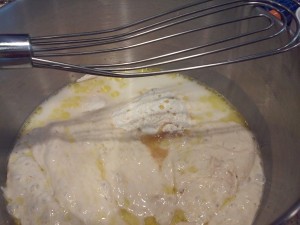
Then you add the remaining ingredients and knead the Dough; a standing Electric Mixer fitted with the Dough Hook is the best to go but if you do not have one, then just make use of your Elbow Grease and knead the dough by hand.
Finish making the Dough and let it rest for at least 20 minutes.
Next comes the fun – stretching and folding the Dough to develop the gluten. This is a four step process, although you can shorten the process by eliminating any of the subsequent stretching and folding turns. (If you do this, your bread won’t have the true Ciabatta texture – somewhat like the texture of sour dough but without the sour taste) I figure that if you are going to make the Ciabatta and if you have the time, it is well worth it to go through the whole process and not eliminate any of the stretching turns)
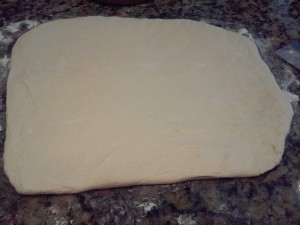
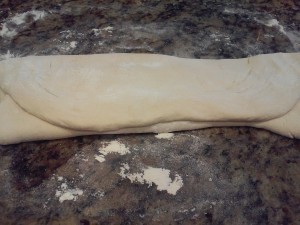
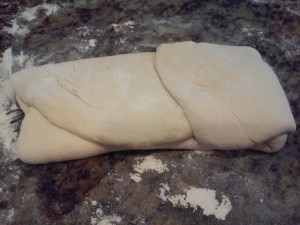
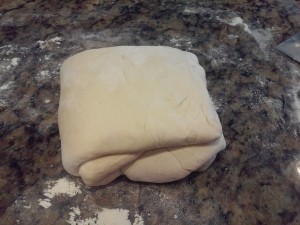
A – Flattened Dough before Stretching
B – Bottom and Top Folds (fold from the side closest to you)
C – Sideways Folds – fold from the right side to the middle and then from the left side over the right side fold
D – Complete fold – cover and let rest 20 minutes before flattening and folding again
Once the stretching process is finished, then you allow the dough to rest for another 50 minutes before placing it on your baking sheet for baking. The Dough can be made into a loaf or cut into rolls – whatever you do, unlike most yeast breads, do not flatten the dough – just gently transfer it to your greased and floured (use cornmeal or Semolina on the pans) baking sheets.
In the photo below left, the loaf is on a Pizza Paddle and below right, the loaf is on a Baking Stone.
The traditional way to bake Ciabatta is to place it on a greased and floured pan and bake it in the middle of the oven with a pan of water on the rack under. The steaming water helps to give the bread its chewy crust. The Baking Stone is an alternative way to bake the bread. It still comes with a nice crusty exterior.
